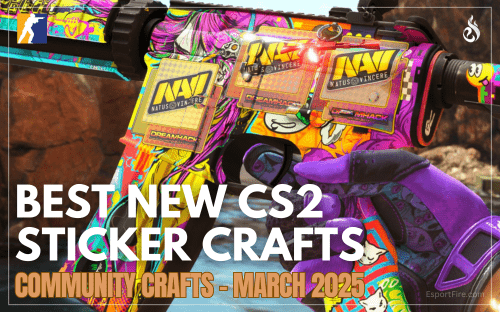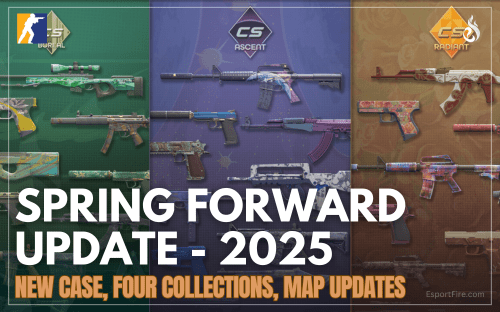NA: Dead Scene - Living Meme
North America’s dominance in the VALORANT scene compared to that in Counter-Strike comes off as a surprise considering the fact that most VALORANT pro players are transitioned former CS:GO pros. In fact, the fully North American Sentinels, who are currently considered to be the best VALORANT team in the world is 4 out of 5 former CS pro players (The outlier being Jared “Zombs” Gitlin, who was formerly an Apex Legends and Overwatch pro).

So, why is NA not good at Counter-Strike?
To their credit, it was a huge achievement as Cloud9 remains the only North American team to win a Counter-Strike major. Team Liquid also managed to make it as far as the finals but finished second to SK at ESL One Cologne 2016. And although it was mostly American, the team was backed by Ukrainian star Oleksander “s1mple” Kostyliev. The then 19-year-old outshined the rest of his teammates and was the highest-rated on TL in several different statistics — one of which was his overall rating — at 1.18. He also had the highest number of total kills in the event amongst all players, with 225 over 11 maps. It was in that same event where s1mple hit the clip that we all still watch, one that got him an in-game graffiti.
Individual talent as part of the problem
2010:
Jordan “n0thing” Gilbert (11th with Evil Geniuses)
Danny “fRoD” Montaner (14th with Evil Geniuses)
2011:
none
2012:
Skipped due to it being a “transition” year for Counter-Strike (From Source to Global Offensive). No Official Top 20 list was ever released.
2013:
Spencer “Hiko” Martin (9th with Complexity)
2014:
Braxton “swag” Pierce (18th with iBuyPower)
2015:
Tyler “Skadoodle” Latham (20th with iBuyPower and Cloud9)
2016:
none
2017:
Jonathan “EliGE” Jablonowski (12th with Team Liquid)
2018:
Keith “NAF” Markovic (6th with Team Liquid)
Russel “Twistzz” Van Dulken (12th with Team Liquid)
Jonathan “EliGE” Jablonowski (15th with Team Liquid)
Timothy “autimatic” Ta (17th with Cloud9)
2019:
Jonathan “EliGE” Jablonowski (4th with Team Liquid)*
Keith “NAF” Markovic (7th with Team Liquid)
Vincent “Brehze” Cayonte (8th with NRG and Evil Geniuses)
Russel “Twistzz” Van Dulken (9th with Team Liquid)
Ethan “Ethan” Arnold (20th with NRG and Evil Geniuses)
2020:
Jonathan “EliGE” Jablonowski (8th with Team Liquid)
Vincent “Brehze” Cayonte (20th with Evil Geniuses)
*All-time highest individual ranking for a North American player
Lacking amount of top-teams
In 2018 and 2019 alone, we witnessed 2 Quarter-finals (ESL Pro League S9 and StarLadder Berlin Major), 2 Semi-finals (Faceit London Major and ESL One New York), and 7 Finals (ESL Pro League S7, ECS Season 5, CS:GO Premier 2018, IEM Chicago, ESL Pro League S8, Blast Pro Series Sao Paulo, and ECS Season 8) matches between the two teams (That is mind blowingly a lot). The record for all Team Liquid vs Astralis games during 2018 and 2019 is 20–3 in favor of Astralis (and maps: 43–12 in favor of Astralis). Perhaps, Team Liquid CSGO’s greatest achievement was in May 2019 when they won Intel Extreme Masters in Sydney, just edging out FNATIC 3–2.
The Online Era of CS:GO as a result of the Covid-19 pandemic took a hard hit on North American CS:GO. The first of teams to depart from the scene was Ghost Gaming. No reasons as to why the organization chose to disband their team were given, the players’ contracts had expired and they were never renewed nor did the team seem interested in finding other players.
Departures and failures
And by far the largest name to leave the scene, Cloud9 also announced their departure after a few failed rosters. The team has been spiraling downwards ever since their historic win at the 2018 Boston Major. Their final nail in the coffin was Henry G’s Colossus roster, which turned out to be everything but a success. The $6,000,000 team was never able to compete with tier 1 teams and found nearly no success in their short-lived reality. The same team that is prided for being the only North American major winner is no longer with us today.
For hopium’s sake, however, Jack Etienne, Cloud9's Founder and CEO, emphasized that his organization's leave will only be a temporary one. As first reported by Rush B Media (RBM), Jack communicated to Ryan, Founder and CEO of RBM, that the team’s only option in the meantime was to step back for financial reasons, and will spend time evaluating how they approach North American CS:GO “in the coming months.”
Mr. Etienne was very clear that Cloud9 would not be leaving CSGO permanently. Due to the financial struggles incurred by the prolonged European stay and the team’s performance struggles, there was no other option but to temporarily take a step back for now. However, Cloud9 intends to remain in Counter-Strike in the future and will examine the North American CSGO scene for its next venture.” — Ryan Friend
Other North American teams that have left the scene include Chaos EC, New England Whalers, Swole Patrol, eUnited, and more. Complexity is still competing in CS:GO but has replaced its North American roster for a European one.
With the release of VALORANT, the scene took an even greater hit
Since October 30th, 2017, over 80% of North American players from the top 30 teams then, have either retired or transitioned to VALORANT, and 90% of the teams have withdrawn their CS roster (only 3 of the 30 remain. Counter-Strike as a whole has never been able to escape controversy. Cheating scandals occur left and right in all regions, but no one takes a harder hit than when it occurs within NA. iBuyPower’s match fixing scandal was one of the first of many. Cloud9’s Adderall accusations, all the way up until Chaos EC’s cheating accusations (that were later cleared) and the FBI’s involvement in more recent match fixings involving money and betting all further damage the reputation of the scene.
Continuous poor performances add more fuel to the fire and cause a greater mess than one that already exists. Both Evil Geniuses and Bad News Bears (who are 2 of only 3 participating NA teams) were eliminated in the groups stage of ESL Pro League Season 14, both going winless at 0–5. The struggle of finding an organization for the player founded and managed Bad News Bears continues as no top name seems to have an interest in signing a team at the tier 2 level.
It is an undeniable fact that North American Counter-Strike has massively declined in most if not all aspects, but there is only the future to look forward to. With the (hopefully) nearing end of the Covid-19 pandemic and ability to participate in LANs again, NA may be able to slowly creep its way back into the scene, and if large names such as Cloud9 and 100 Thieves are willing to reinvest in rosters, we just might witness another major trophy in North American hands.
 Information powered by Liquipedia
Information powered by Liquipedia




